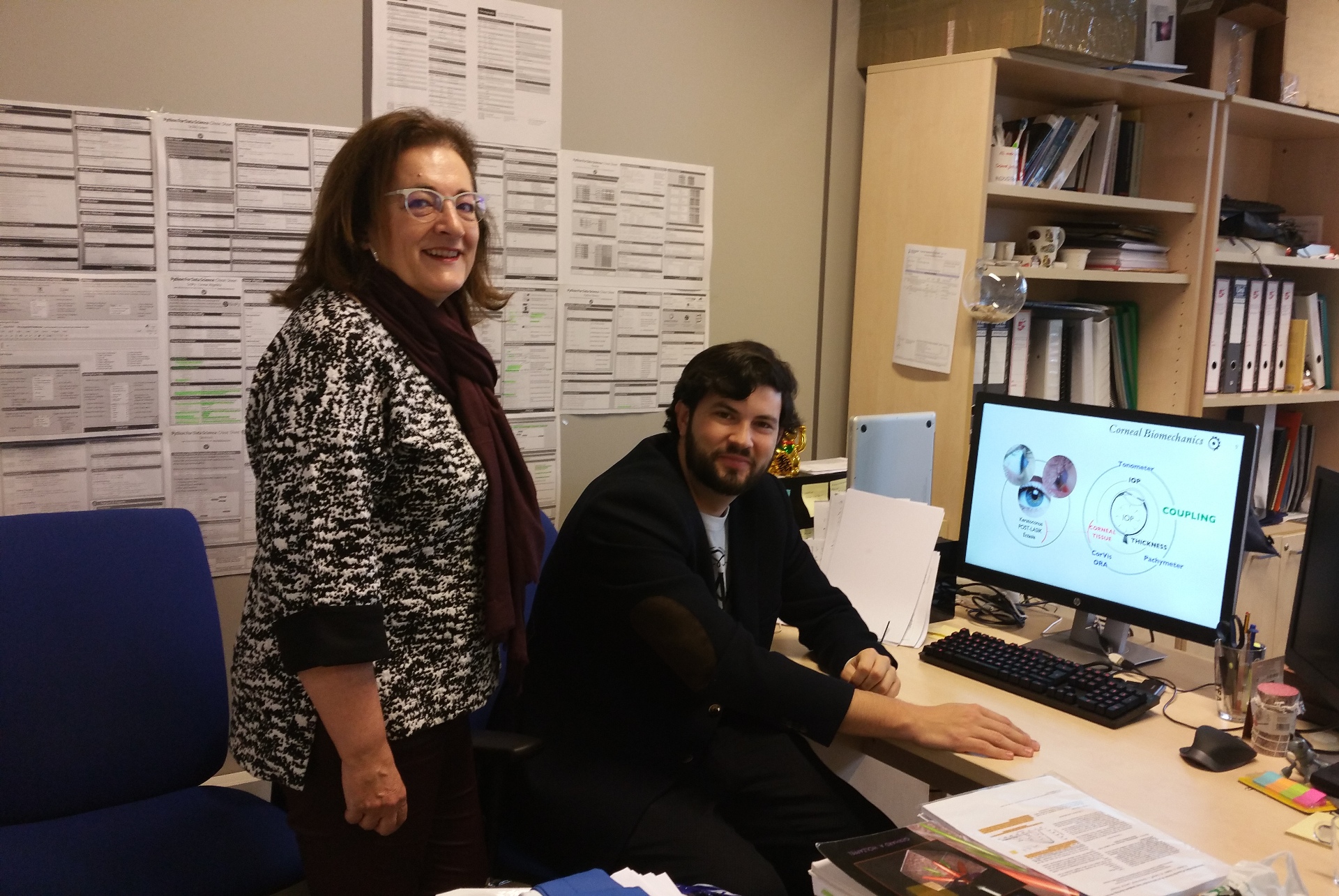
Researchers of the NANBIOSIS U13 apply numerical models to the cornea to better understand how it behaves and help in surgical planning. Data and algorithms developed through the computer, together with the 3D image, make it easier for ophthalmologists to perform eye surgery more precise and personalized treatments for each patient
The work carried out by Miguel Ángel Ariza Gracia at the Aragón Engineering Research Institute (I3A) has been recognized by the University of Zaragoza with the Extraordinary Award for the Best Doctoral Thesis of the Biomedical Engineering Program in 2017
In this line of research, framed in the European project PopCorn has been working Miguel Angel Ariza since September 2013 under the supervision of Begoña Calvo and José Félix Rodríguez Matas, the research group in Applied Mechanics and Bioengineering (AMB) of the I3A – CIBER -BBN, which coordinates the unit 13 of NANBIOSIS and the Laboratory of Biological Structure Mechanics (LabS) of the Politecnico di Milano, respectively. The Mechanical Characterization of Biological Tissues that the project needs is carried out in NANBIOSIS U13 Tissue & Scaffold Characterization Unit. Unit 27 High Performance Computing of NANBIOSIS is also used in this project for the Computational Simulation of Biological Tissues.
The advances in corneal biomechanics open new ways and possibilities to create technical equipment that allow to know the mechanical properties and characteristics of the eye
Here are joined three technologies, the topography (allows to measure the geometry of the cornea), the tonometry of no contact or breath of air (deforms the cornea to obtain dynamic variables that are believed associated with the properties of the cornea) and the models in silico or numerical. The three, together with the phenoptic image technology, “can make it possible to obtain the geometry of a patient’s eye, with its personalized properties to give better advice to doctors in refractive surgeries or in the planning of another surgical intervention,” explains Miguel Angel Ariza
Begoña Calvo, who also works on the numerical modeling of other structures such as skeletal muscle, points out that this “generic” process of reconstruction, transfer of clinical data to the model and generation of a finite element model can be used to simulate other treatments or reproduce different surgical techniques. “The work of Miguel Ángel has allowed us to delve into what is now known as artificial intelligence, having the necessary algorithms to generate databases that can be used in the clinic,” he says.
Fibers of collagen in the cornea
The quality of the cornea tissue depends on the collagen fibers that we have embedded in the corneal stroma, its orientation is what gives that transparency and its links (crosslinks) structural integrity. “Our proposal is to go a step further, to work to better understand collagen fiber,” explains Ariza.
Nowadays, “there is no technical team that provides all the properties and allows to know what quality the corneal tissue has to be able to adequately respond to surgery and subsequent treatments,” recalls Dr. Calvo.








